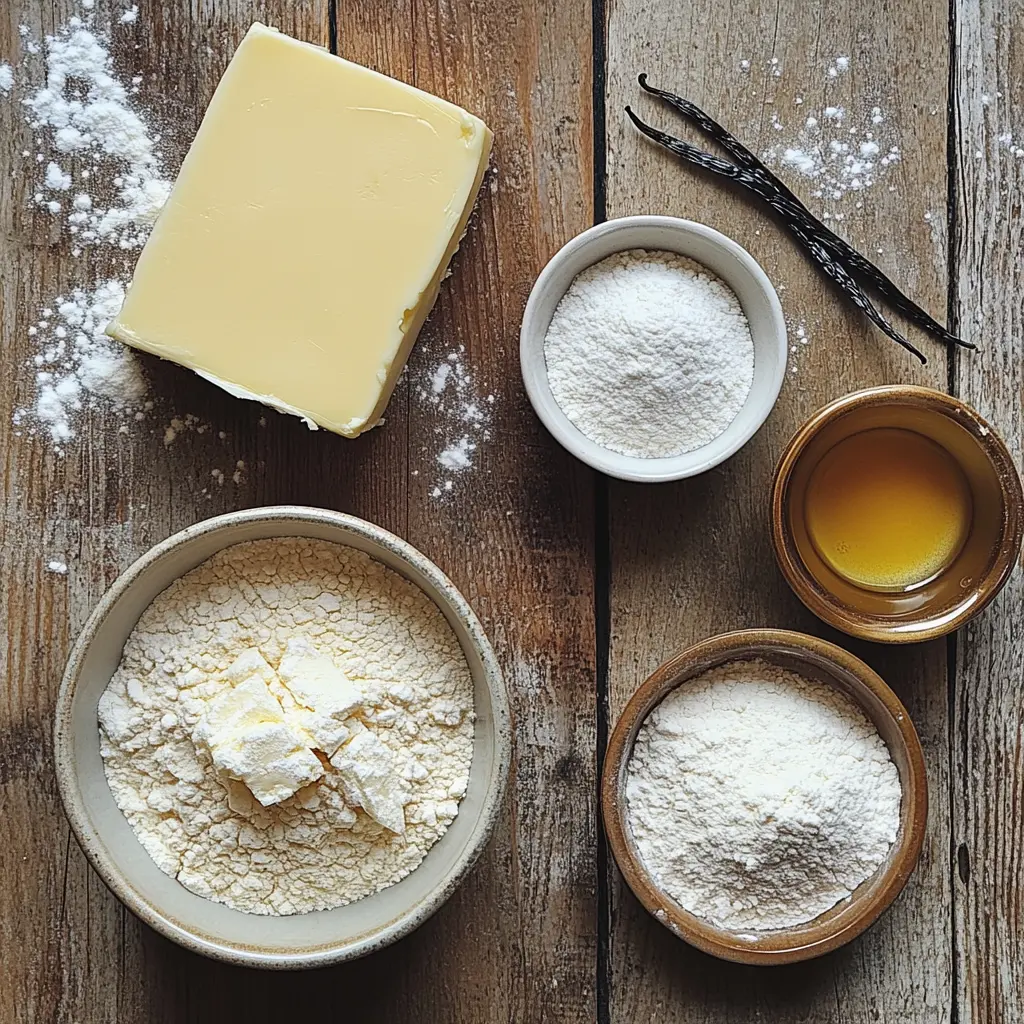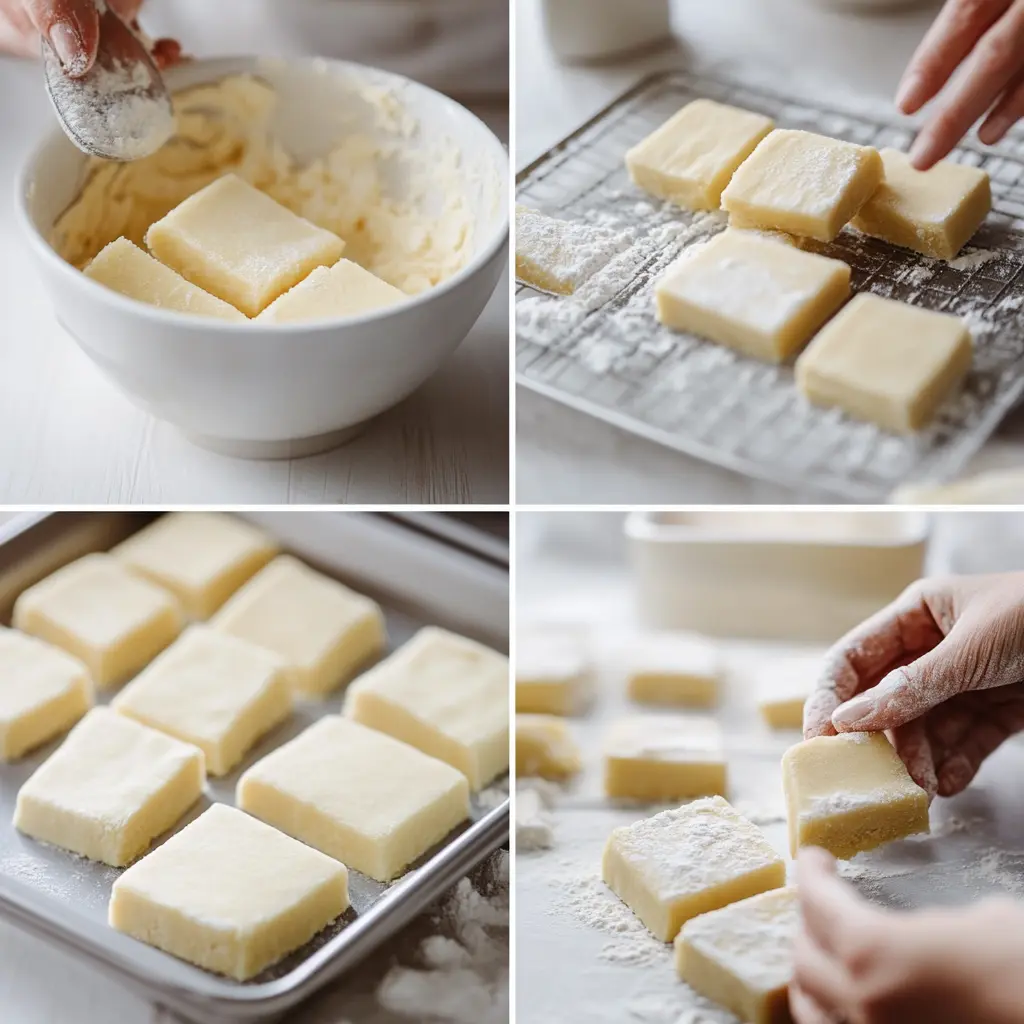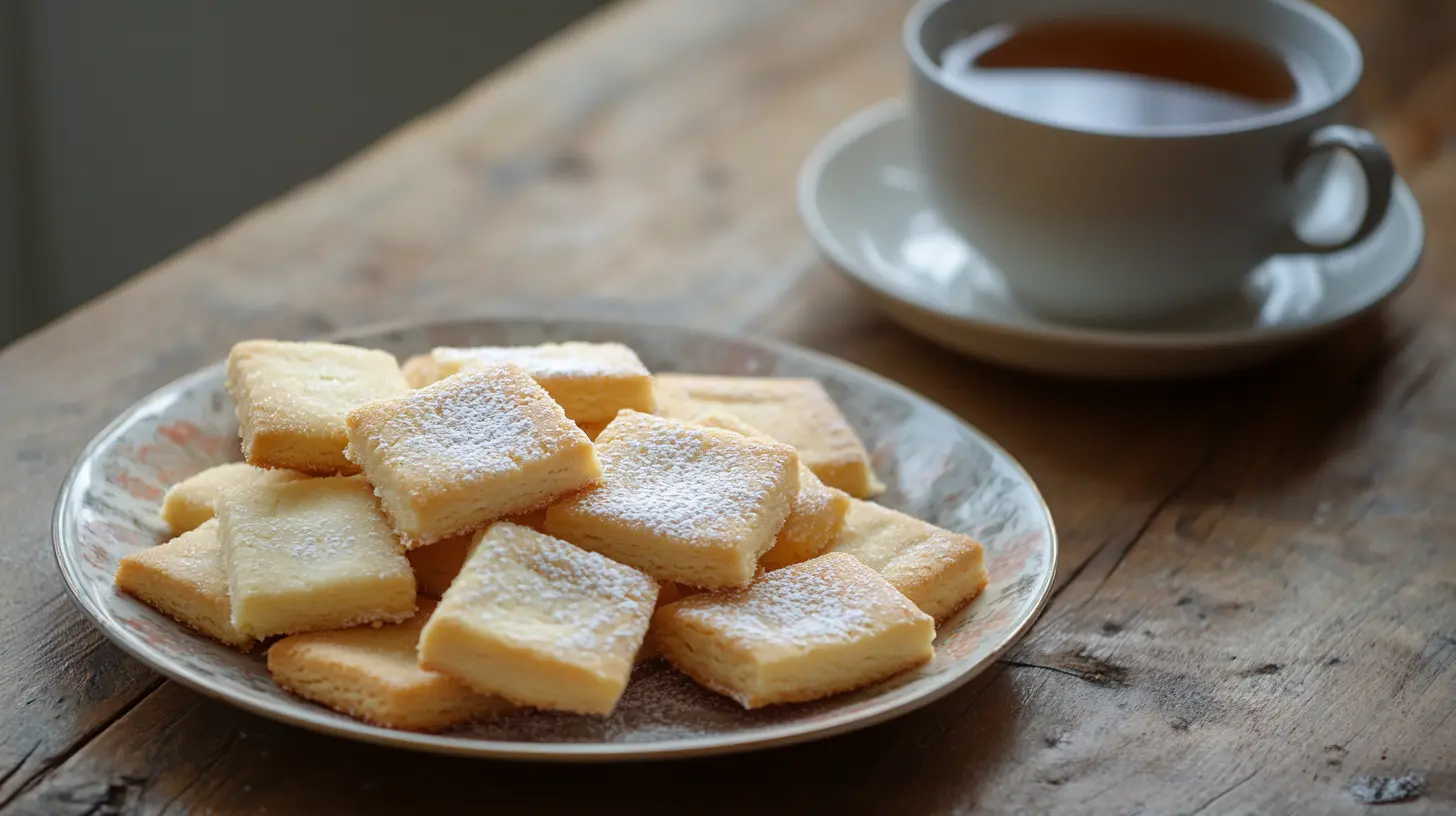What is the Secret to Good Shortbread?
Shortbread cookies are timeless classics loved for their rich, buttery flavor and delicate, crumbly texture. But what truly makes this recipe so special? From choosing the right ingredients to perfecting baking techniques, there’s a fine art to crafting these delightful treats. In this article, we’ll uncover what is the secret to good shortbread, exploring its ingredients, techniques, and creative ways to make them truly exceptional. Whether you’re new to baking or a seasoned pro, these tips will help you bake the best shortbread of your life!
Table of Contents
Understanding the Basics for Good Shortbread
The Origins and History
Is dates back to 16th-century Scotland, where it was considered a luxurious treat reserved for special occasions. Traditionally made with just three ingredients—flour, butter, and sugar—it’s a simple recipe that has stood the test of time. Scottish bakers often shaped it into fingers or rounds, which is why shortbread remains a staple during Hogmanay (Scottish New Year) celebrations. Its timeless appeal lies in its rich flavor and satisfying texture.
Key Ingredients
The magic of shortbread comes from its simplicity. Butter is the star of the show, giving it that rich and creamy taste. Sugar sweetens the dough, while flour binds it all together. Unlike other cookies, shortbread skips the eggs and leavening agents, which explains its dense and crumbly texture. Even small tweaks to these basic ingredients can affect the final product.
What Makes This recipe Unique from Other Cookies?
Shortbread is all about balance. Unlike chocolate chip cookies or snickerdoodles, it doesn’t rely on heavy sweetness or added mix-ins. Its charm lies in its buttery, melt-in-your-mouth consistency and light sweetness. The absence of baking powder or soda means there’s no rise—just a perfectly flat, golden surface that crumbles beautifully with each bite.
By understanding its roots and the simplicity of its ingredients, you can appreciate why shortbread has remained so loved. But crafting the perfect shortbread goes beyond knowing the basics. In the next section, we’ll dive into the essential ingredients and how they impact your recipe. Ready to take your shortbread skills to the next level? Let’s move on!
Ingredients to need for Good Shortbread
Choosing the Best Butter
Butter is the backbone of shortbread. But not all butter is created equal. Using unsalted butter is key because it lets you control the saltiness of your cookies. The quality of the butter also matters—a higher fat content gives shortbread its iconic richness. Room-temperature butter blends more easily with the sugar, creating a smooth and pliable dough. If you’ve ever wondered what is the secret to good shortbread, it starts with top-notch butter.
Why Sugar Type Matters: Granulated vs. Powdered
The type of sugar you choose can alter your shortbread’s texture. Granulated sugar adds a slight crunch, while powdered sugar makes for a softer, more delicate bite. Some bakers even mix the two for the best of both worlds. Stick to white sugar, as brown sugar changes the flavor and can overpower the buttery goodness. A light hand when mixing sugar and butter also helps keep the dough tender.
The Role of Flour in Texture and Taste
Flour is another key player in shortbread’s structure. All-purpose flour works well, but using a low-protein flour, such as pastry flour, can give the cookies a finer crumb. Sifting the flour before mixing it in prevents lumps and helps distribute it evenly. For a slightly nutty flavor, some bakers like to swap a small portion of the flour for rice flour or cornstarch. These tweaks can add a unique touch to your shortbread while keeping the classic flavor intact.
Optional Ingredients for Variations: Vanilla, Almond, or Lemon Zest
While traditional shortbread sticks to the basics, there’s room for a little creativity. Vanilla extract adds warmth, almond extract creates a nutty twist, and lemon zest brings a refreshing tang. Sprinkle some sea salt on top for a sweet-salty combo or toss in a handful of finely chopped nuts. These small additions can make your shortbread stand out while keeping it true to its roots.

Step-by-Step Guide for Good Shortbread
Preparing the Ingredients: Tips and Tricks
Start by measuring your ingredients precisely. Baking is a science, so even slight missteps can throw off the balance. Always use room-temperature butter and sift your flour to avoid lumps. If you’re asking yourself what is the secret to good shortbread, careful preparation is the first step.
Mixing the Dough: Common Mistakes to Avoid
Cream the butter and sugar until it’s smooth but not whipped. Overmixing at this stage can make the dough too soft, which results in cookies that spread during baking. Add the flour gradually, folding it in with a spatula or your hands. The dough should feel crumbly but hold together when pressed. Avoid overworking the dough—it’s a common mistake that can make your shortbread tough.
Shaping and Cutting Shortbread: Tips for Consistent Sizes
Roll the dough gently on a floured surface or press it into a baking pan. Shortbread is known for its clean lines, so use a sharp knife or cookie cutter for precision. For traditional Scottish shortbread, shape the dough into a round and score it into wedges before baking. Prick the surface with a fork for that classic shortbread look—it also helps the cookies bake evenly.
Baking for the Perfect Texture: Time and Temperature Guide
Shortbread is baked low and slow. Set your oven to 300°F (150°C) for the best results. Bake until the edges turn light golden but avoid letting them brown too much. Overbaking can dry out the cookies and rob them of their signature crumbly texture. If you’ve been wondering what is the secret to good shortbread, the answer lies in precise baking.
Cooling and Storing
Once out of the oven, let the shortbread cool on the pan for 10 minutes before transferring it to a wire rack. This helps it firm up without crumbling. Store your cookies in an airtight container to keep them fresh for up to two weeks. If you’ve made a big batch, shortbread freezes well—just wrap them tightly in parchment paper and a freezer bag.
With these steps, you’re well on your way to creating melt-in-your-mouth shortbread that’s sure to impress. But what happens when things don’t go as planned? Stay tuned for Part 4, where we’ll tackle common shortbread problems and how to fix them.

Troubleshooting Common Problems
Why Is My Shortbread Too Crumbly?
Crumbly shortbread can ruin your experience, but it’s a common issue. The main culprit is often too much flour or overmixing the dough. To fix this, measure your flour precisely and avoid packing it into the measuring cup. Another trick is to add a tablespoon of cornstarch to the flour—it helps hold the dough together without making it dense. If you’re still having trouble, slightly increase the butter for a softer texture. Wondering what is the secret to good shortbread? It lies in getting the ingredient ratios just right.
How to Fix Overbaked or Dry Shortbread
Overbaking can make shortbread dry and brittle. Always bake at a low temperature, around 300°F (150°C), and keep a close eye on the oven. Pull the cookies out as soon as the edges start turning golden. If your cookies are already dry, you can try pairing them with tea or coffee to soften the bite. Remember, slow and steady wins the race when baking shortbread.
Getting the Right Balance of Sweetness and Salt
Shortbread that’s too sweet or salty can feel unbalanced. To solve this, use unsalted butter and add salt sparingly. If the flavor feels flat, try a pinch of fine sea salt—it enhances the buttery taste without overpowering it. Baking is all about small adjustments, and with practice, you’ll nail the perfect balance every time.
Enhancing Good Shortbread
Experimenting with Flavors: Savory and Sweet Variations
Shortbread is versatile, making it the perfect canvas for creative flavors. For a savory twist, add herbs like rosemary or thyme, or sprinkle grated Parmesan into the dough. If you prefer sweet, mix in chocolate chips, dried fruits, or even a dash of cinnamon. Each addition brings a new personality to your cookies, while still holding onto that classic shortbread charm.
Pairing it with Beverages
Pairing shortbread with the right drink takes the experience to the next level. The buttery flavor goes wonderfully with a warm cup of tea or coffee. For a refreshing twist, try pairing it with lemonade or iced tea. If you’re hosting a special gathering, shortbread also pairs beautifully with dessert wines or champagne.
Creative Presentation Ideas
Shortbread makes a lovely homemade gift. To wow your friends, package the cookies in decorative tins or wrap them in parchment paper tied with ribbon. Adding a personal touch, like a handwritten recipe card, makes the gift even more special. Curious what is the secret to good shortbread as a gift? It’s all in the presentation and the care you put into it.
For more delicious shortbread recipes, check out Cherry Almond Shortbread Cookies or Ginger Shortbread Cookies on Alexia Recipes. These recipes offer unique twists on the classic treat and are sure to inspire your baking!
FAQs
Can I Use Margarine Instead of Butter?
While margarine might work as a substitute for butter, it won’t give your recipe the same rich flavor or crumbly texture. Butter contains natural fats that create that iconic melt-in-your-mouth experience. Margarine, on the other hand, has a higher water content, which can result in tougher cookies. If you’re aiming for authentic shortbread, stick to high-quality butter. After all, what is the secret to good shortbread if not its buttery richness?
How Do I Store this recipe for Long Periods?
To keep shortbread fresh, store it in an airtight container at room temperature. It can last up to two weeks when stored properly. If you need to keep it longer, freezing is a great option. Wrap the cookies in parchment paper and then place them in a freezer bag. When you’re ready to enjoy them, let them thaw at room temperature for about 30 minutes. Proper storage helps maintain the texture and taste you worked hard to achieve.
Can Be Made Gluten-Free?
Yes, shortbread can be made gluten-free by using almond flour or a gluten-free all-purpose flour blend. Keep in mind that the texture might change slightly, but the buttery flavor should still shine through. For the best results, try adding a tablespoon of cornstarch to mimic the fine crumb of traditional shortbread.
What’s the Difference Between Scottish Shortbread and Other Types?
Scottish shortbread sticks to the basics—flour, butter, and sugar. It’s known for its simple and pure flavor. Other versions might include eggs or leavening agents, which give them a lighter texture but stray from the traditional dense crumb. If you’ve ever wondered what is the secret to good shortbread, Scottish recipes hold the answer with their emphasis on simplicity and quality.
conclusion For Good Shortbread
Crafting the perfect shortbread comes down to a few key factors—quality ingredients, proper technique, and a dash of creativity. The answer to what is the secret to good shortbread lies in its simplicity. With just butter, sugar, and flour, you can create a timeless treat that never fails to impress.
Whether you’re aiming for a classic recipe or experimenting with new flavors, this recipe offers endless possibilities. By following these tips and paying attention to details like mixing, baking, and storage, you’ll master the art of shortbread in no time.

